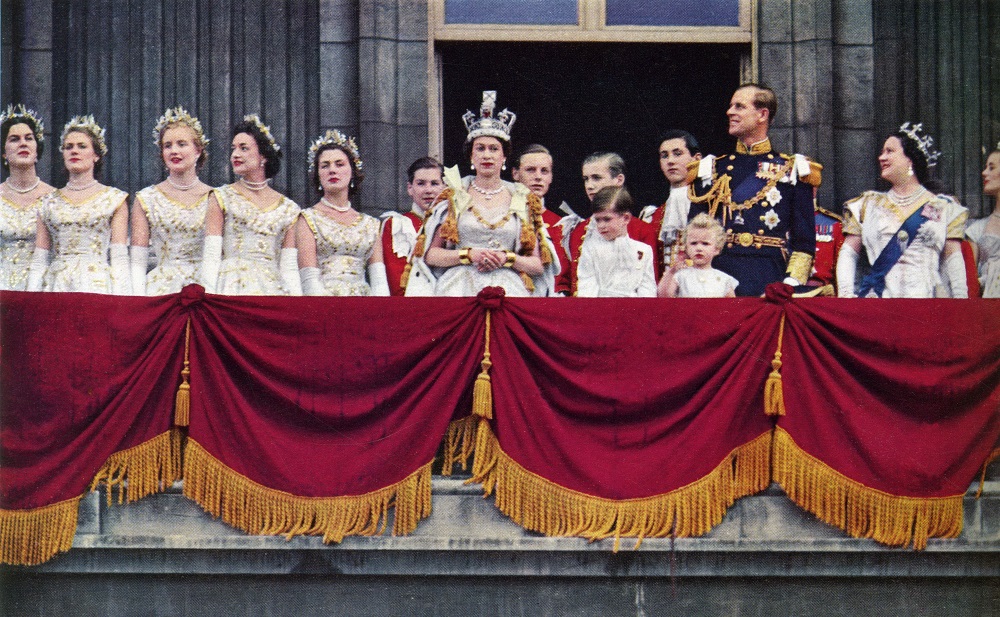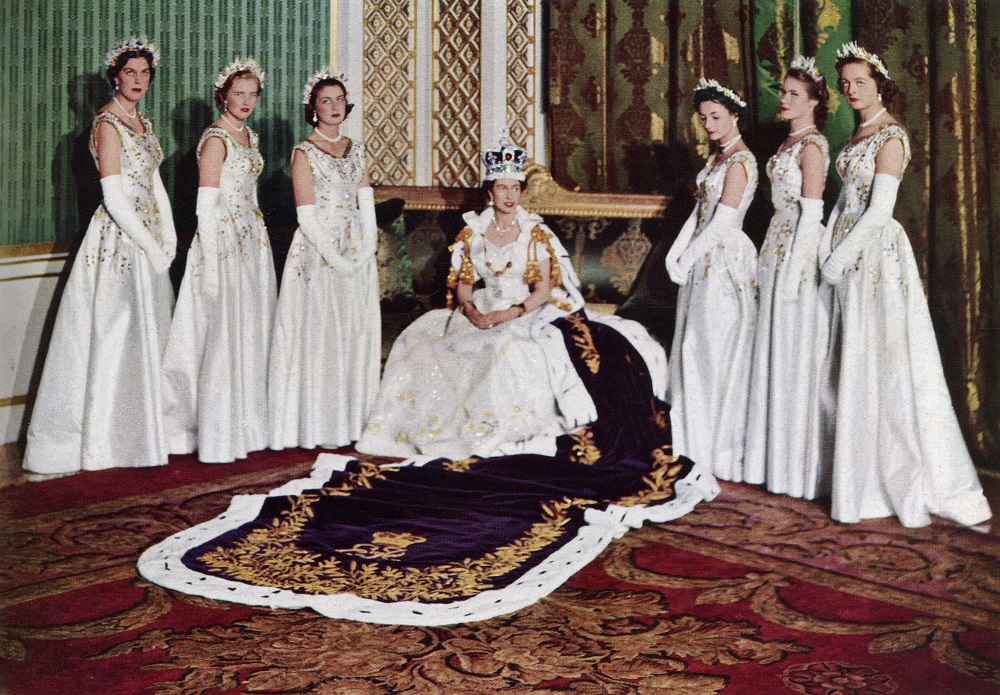This month in history: The coronation of Queen Elizabeth II
On 2 June 1953, Elizabeth II was crowned at Westminster Abbey with 8,251 guests in attendance. As part of our ‘this month in history’ series, we look at the accession and coronation of Elizabeth II as described in The Gazette.

The death of King George VI
Queen Elizabeth II was proclaimed sovereign throughout her realms after her father, King George VI, died in his sleep at Sandringham in the early hours of 6 February 1952. A Gazette Extraordinary (Gazette issue 39458) documented the death of King George VI and accession to the throne of Queen Elizabeth II:
‘We… proclaim that the High and Mighty Princess Elizabeth Alexandra Mary is now, by the Death of our late Sovereign of Happy Memory, become Queen Elizabeth the Second, by the Grace of God Queen of this Realm and of all Her other Realms and Territories, Head of the Commonwealth, Defender of the Faith, to whom Her lieges do acknowledge all Faith and constant Obedience, with hearty and humble Affection; beseeching God, by whom Kings and Queens do reign, to bless the Royal Princess Elizabeth the Second with long and happy Years to reign over us.’
Elizabeth II was in Kenya at the time of her father’s dead, but made her Accession Declaration to her Privy Council at St James Palace two days later on 8 February where she promised ‘to uphold constitutional government and to advance the happiness and prosperity of my peoples spread as they are all the world over’ (Gazette issue 39467).
George VI was buried at St George's Chapel, Windsor Castle on 15 February 1952, following a State Funeral in the Chapel (Gazette issue 39575).
The coronation of Elizabeth II
The coronation of Elizabeth II wouldn’t take place until 2 June 1953, over a year after her Accession Declaration. This was because tradition allowed an appropriate length of time to pass after a monarch dies before holding a celebration.
The Queen’s coronation took place at Westminster Abbey with 8,251 guests in attendance. 129 nations and territories were officially represented at the coronation service and it was the first coronation to be televised. It was watched by 27 million people in the United Kingdom (out of the 36 million population) and 11 million people also listened on the radio.
The day of the coronation began with a procession from Buckingham Palace to Westminster Abbey. The Order of Processions and the coronation ceremony were published in detail in The Gazette on 17 November 1953 (Gazette issue 40020).
The coronation procession of Elizabeth II
The procession started with members of the Royal Family and royal representatives of foreign states, who “proceeded to the Abbey in cars from Buckingham Palace and St. James's Palace at 8.40 and 8.50 a.m.” They were followed by rulers of states under Her Majesty's protection, Prime Ministers (including Winston Churchill) and “the princes and princesses of the blood royal.” The Queen Mother and Princess Margaret then left Clarence House at 10am.
At exactly “10.26 a.m.”, Her Majesty The Queen and The Duke of Edinburgh left Buckingham Palace in the Gold State Coach pulled by “eight grey horses”: Cunningham, Tovey, Noah, Tedder, Eisenhower, Snow White, Tipperary and McCreery. The route to Westminster Abbey went “by The Mall, Admiralty Arch, south side of Trafalgar Square, Northumberland Avenue, Victoria Embankment, Bridge Street, north and west sides of Parliament Square and Broad Sanctuary to the west entrance of Westminster Abbey.”
Overall, around 30,000 men took part in the procession – 3,600 from the Royal Navy, 16,100 from the Army and 7,000 from the RAF, 2,000 from the Commonwealth and 500 from the 'Colonies'.
The Queen and The Duke of Edinburgh arrived at the Royal Entrance to Westminster Abbey at 11am where they were met by “the Earl Marshal and the other Great Officers of State, the Lord bearing the Sword of State, the Archbishops of Canterbury and York, and the Bishops her Supporters.”
At 11.15am, Elizabeth II joined the procession “awaiting her in the Vestibule, and, entering by the West Door of the Abbey”. She then “proceeded in State through the Nave and the Choir to her Chair of Estate in the Area near to the Altar, the choristers (under the direction of Dr. William McKie, M.V.O., M.A., D.Mus., Organist of the Abbey) singing the Anthem.”

The coronation service of Elizabeth II
The Queen's coronation service was conducted by The Archbishop of Canterbury and lasted almost three hours. It was conducted in six parts:
- the recognition
- the oath
- the anointing
- the investiture (which included the crowning)
- the enthronement
- the homage
The Queen’s investiture took place on St Edward's Chair, made in 1300 for Edward I and used at every coronation since. However, before being crowned, Elizabeth II was invested with the Armills (bracelets), Stole Royal, Robe Royal and the Sovereign's Orb, followed by the Queen's Ring, the Sovereign's Sceptre with Cross and the Sovereign's Sceptre with Dove.
The Orb, especially, was an important piece of regalia. Made in 1661, the globe was made of gold and surrounded by diamonds, emeralds, rubies, sapphire and pearls with a large amethyst at the summit. The coronation ring, known as 'The Wedding Ring of England', was placed on The Queen's fourth finger of her right hand. It was made for William IV's coronation in 1831 and has been worn at every coronation since except for Queen Victoria, whose fingers were so small that the ring could not be reduced in size enough; an alternative was therefore created.
Finally, the Saint Edward's Crown, also made in 1661, was placed on the head of Elizabeth II: “The Archbishop, now being at the Altar, took Saint Edward's Crown into his hands, and setting it before him again upon the Altar said the prayer of Benediction, beginning with the words ‘O God the Crown of the faithful’.”
Elizabeth II, wearing the Imperial Crown and holding the Sceptre with the Cross and the Orb, left Westminster Abbey “through the Choir and the Nave to the West Door of the Church […] whilst all assembled sang the National Anthem.”
Coronation celebrations
Following the ceremony, a procession led The Queen, The Duke of Edinburgh and other attendees back to Buckingham Palace. The route from Westminster Abbey went by “Broad Sanctuary, south and east sides of Parliament Square, Parliament Street, Whitehall, south side of Trafalgar Square, Cockspur Street, Pall Mall, St. James's Street, Piccadilly, Hyde Park Corner, East carriage road in Hyde Park, Marble Arch, Oxford Street, Oxford Circus, Regent Street, Piccadilly Circus, Haymarket, Cockspur Street, south side of Trafalgar Square, Admiralty Arch, The Mall to Buckingham Palace (South centre gate).”
Upon her return to Buckingham Palace, The Queen appeared with her family on the balcony to greet the cheering crowds, still wearing the Imperial State Crown and the Royal Robes. She would appear once more on the balcony at 9.45 pm to turn on the 'lights of London', which cascaded down the Mall until all the floodlights from the National Gallery to the Tower of London had been lit.
After the coronation ceremony, the Queen hosted a lunch for which food had to be prepared in advance. To cater for the foreign guests in attendance, Florist Constance Spry proposed a recipe of cold chicken in a curry cream sauce. And thus, ‘coronation chicken’ was invented.

The reign of Queen Elizabeth II
The new Queen’s proclamation after the coronation was gazetted on 6 June 1953 (Gazette issue 39566). Elizabeth II would go on to become the longest reigning monarch in British history, a feat she achieved on 9 September 2015.
Queen Elizabeth II died at Balmoral on 8 September 2022 (Gazette issue 63808). A statement from Buckingham Palace confirmed the Queen’s demise. The statement read: “The Queen died peacefully at Balmoral this afternoon. The King and The Queen Consort will remain at Balmoral this evening and will return to London tomorrow.” Her son, Charles III became King.
See also
This month in history: The funeral of Lord Horatio Nelson
This month in history: Edward VIII abdication crisis
Images
© Illustrated London News Ltd/Mary Evans
© Illustrated London News Ltd/Mary Evans
Yui Mok - WPA Pool/Getty Images
Publication updated: 17 May 2023
